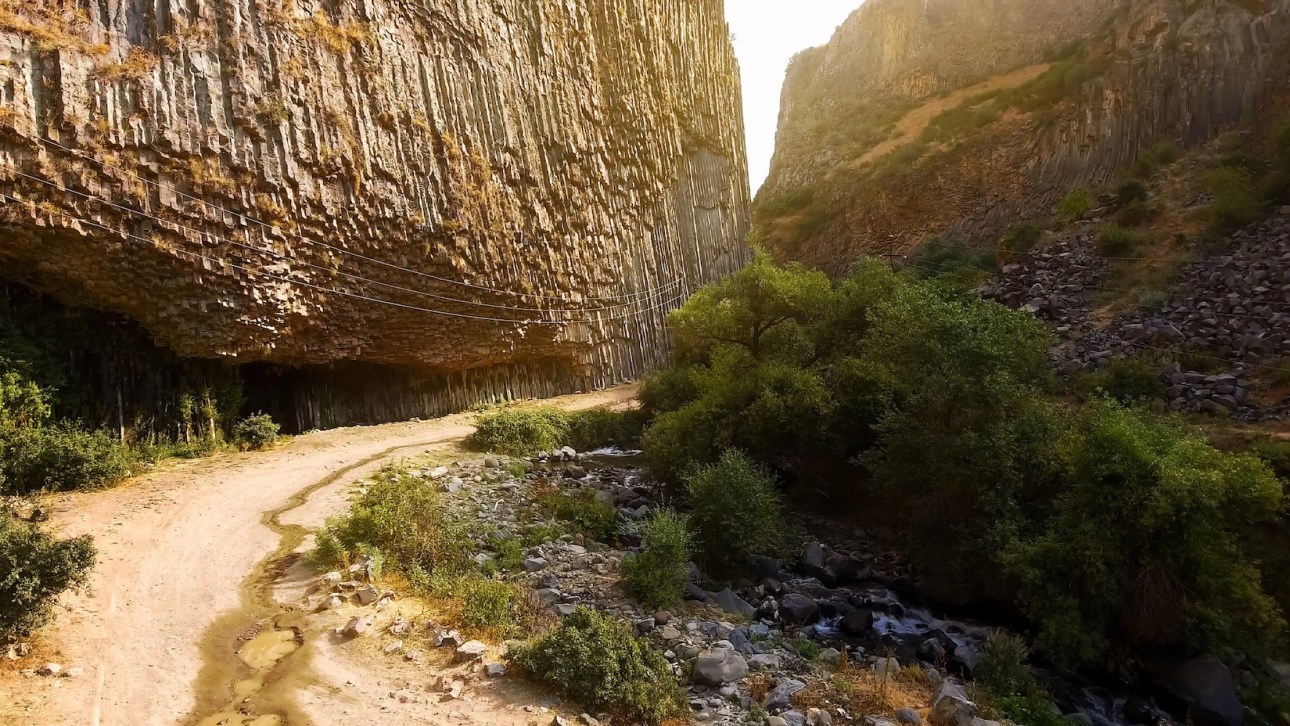Photo by depositphotos.com
Armenia’s landscapes are breathtaking, and the Symphony of Stones in the Garni Gorge is one of its most remarkable wonders. This protected natural monument looks like it was carved by master stonemasons, yet it was shaped by volcanic forces and erosion over millions of years. Below you’ll find how this natural marvel was formed, where it is, and the best ways to visit from Yerevan.
Location

About 30 kilometers southeast of Yerevan lies the village of Garni, a popular stop for travelers. Next to it is the Garni Gorge, carved by the Azat River. The river, fertile soil, and defensible terrain made the area attractive to settlers as far back as the 3rd millennium BCE. Later, the Kingdom of Urartu occupied these lands, and the fortress at Garni served as the summer residence of Armenian royalty.
In the 1st century CE, a Greco-Roman temple was built here. Destroyed by an earthquake in the 17th century, it was restored in the 1970s. Often called the easternmost example of classical architecture, it remains the only well-preserved Hellenistic structure in the former Soviet Union. Seven kilometers farther is Geghard Monastery, founded in the 8th century.
Most visitors come for the temple and monastery, but the dramatic gorge directly below the temple is equally worthy of attention. On the opposite side, the Khosrov Forest State Reserve protects juniper and oak forests preserved since the 3rd century, along with many endemic plants. Though it covers only 1% of Armenia’s territory, it hosts nearly half of the country’s plant species and a third of the Caucasus flora.
What You’ll See

The Garni Gorge is picturesque end to end, with the Azat River winding through it. One stretch, in particular, stands out: a several-kilometer section where sheer walls are made of tightly packed basalt columns rising up to 50 meters. These slender pillars, with pentagonal and hexagonal cross-sections, are so precise they barely look natural.
In some places, floods eroded the lower portions of the columns, leaving the tops protruding like natural balconies. Warning signs mark areas where loose stones may fall.
Because the columns resemble the pipes of a giant organ, locals call the site the “Basalt Organ” or “Stone Organ,” but its official name is the more poetic Symphony of Stones.
Exploring the formation…
Click Here to Read the Full Original Article at Unusual Places…
